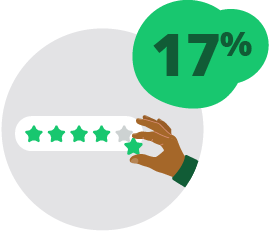Transform Complacency into Contentment: Top Tips for Engaging Your People
Turning Complacency into Contentment:
iNOMEE's Perspective on Workforce Engagement in 2025
At iNOMEE, we firmly believe that people are an organisation's most valuable asset. Each individual brings unique insight, experience, and expertise that elevate a business. It is therefore essential that investment in people reflects their value, ensuring complacency does not take root.
Recent reports indicate a rise in complacency and disengagement within organisations in 2025. Following the “boreout” trend, which examined the impact of boredom and burnout, complacency poses an equally significant threat to business success and employee wellbeing.
Understanding Complacency and Contentment
Complacency is defined as being so satisfied with one’s abilities or situation that there seems little need for further effort. It can result from disengagement, signalling that an organisation must intensify efforts to engage its workforce and invest in their development.
However, not all cases of employees staying in their roles without seeking promotion indicate complacency. Often, it signifies contentment—a positive state of satisfaction and peace with one’s current position, paired with openness to growth and change. This openness is crucial in transforming complacency into contentment.
Insights into Complacency and Contentment
Research conducted by Wiley Workplace Intelligence in 2024 explored levels of contentment and complacency within organisations. Surveying 2,220 individuals, the study examined engagement levels, motivation for career progression, and factors that sustain investment in both personal and organisational success.
The Fine Line Between Complacency and Contentment
Findings revealed a delicate balance between complacency and contentment. Engagement levels in one's role naturally ebb and flow. Not all employees aspire to climb the corporate ladder, and that is entirely acceptable. Individuals who prefer to contribute without managing others can still deliver exceptional value. The key difference lies in engagement levels. Content employees seek upskilling opportunities, maintain a healthy work/life balance, and remain fully engaged during work hours.
Redefining Professional Success in 2025
Professional success in 2025 looks markedly different from previous years. Employees increasingly seek balance and fulfilment in their work. Factors such as job satisfaction, organisational culture, and team quality are now prioritised over rapid career progression. The research found that 62% of respondents do not feel compelled to climb the corporate ladder, indicating they derive meaning in other ways.
Contributing to organisational success topped the list of success indicators, followed by achieving work/life balance and personal job satisfaction. Only 13% of respondents considered advancing to leadership positions a primary marker of success.
What Professional Success Looks Like
Promoting Internal Growth for Greater Contentment
While not everyone feels pressure to advance, 65% of respondents expressed plans to pursue leadership opportunities within their organisations. This indicates that organisations are fostering cultures where employees wish to stay and grow.
Encouraging internal career progression not only promotes contentment but also reduces turnover, enhances motivation, and boosts productivity. Promoting from within retains top talent, often proving more cost-effective than hiring externally. Long-term employees also become key repositories of institutional knowledge, critical for organisational stability.
Interestingly, among those seeking leadership roles, the top motivators were the desire to coach and mentor direct reports, followed closely by the pursuit of new challenges and better compensation.
Identifying Red Flags for Complacency
While many employees who chose not to pursue leadership roles cited positive reasons, such as job satisfaction and work/life balance, there were notable red flags signalling potential complacency:
Increased stress (20%)
Heavier workloads (12%)
Concerns about office politics (10%)
Such concerns, though common, should prompt organisations to build supportive cultures, ensuring employees' decisions stem from contentment rather than complacency.
And if this is not enough, here are few more stats:
According to Gallup's 2023 State of the Global Workplace Report, only 23% of employees worldwide are engaged in their work, leaving a significant 77% either disengaged or actively disengaged.
A substantial 94% of employees indicate they would remain longer at a company if it invested in their career development, underscoring the link between development opportunities and employee retention.
Strategies for Turning Complacency into Contentment
The respondents highlighted the top five factors that would motivate them to consider internal career advancement:
Promote Work/Life Balance: Foster flexibility and open communication.
Foster Trust: Encourage deeper connections among team members.
Nurture a Positive Organisational Culture: Recognise individual differences and promote self-awareness.
Mentorship from Current Leaders: Facilitate mentorship programmes and informational interviews.
Commitment to Purpose: Clearly communicate how individual contributions impact organisational objectives.
By leveraging these strategies, organisations can transform complacency into genuine contentment, driving employee engagement and business success.
iNOMEE’s Commitment to Workforce Growth
At iNOMEE, we recognise the importance of empowering organisations with the trainings and frameworks necessary to foster engagement and growth:
WORKPLACE - Engage every individual in building more effective relationships at work.
MANAGEMENT - Teach managers to successfully engage, motivate, and develop their people.
NEURODIVERISTY IN THE WORKPLACE - Recognising the unique strengths and perspectives that neurodivergent individuals bring to our teams is essential for fostering creativity, collaboration, and productivity.
These innovative solutions enable organisations to develop environments where employees feel valued, engaged, and motivated to grow. Together with Wiley’s tools, iNOMEE is committed to making the workplace a more rewarding and productive space for everyone in 2025.
©2025 iNOMEE, John Wiley & Sons







